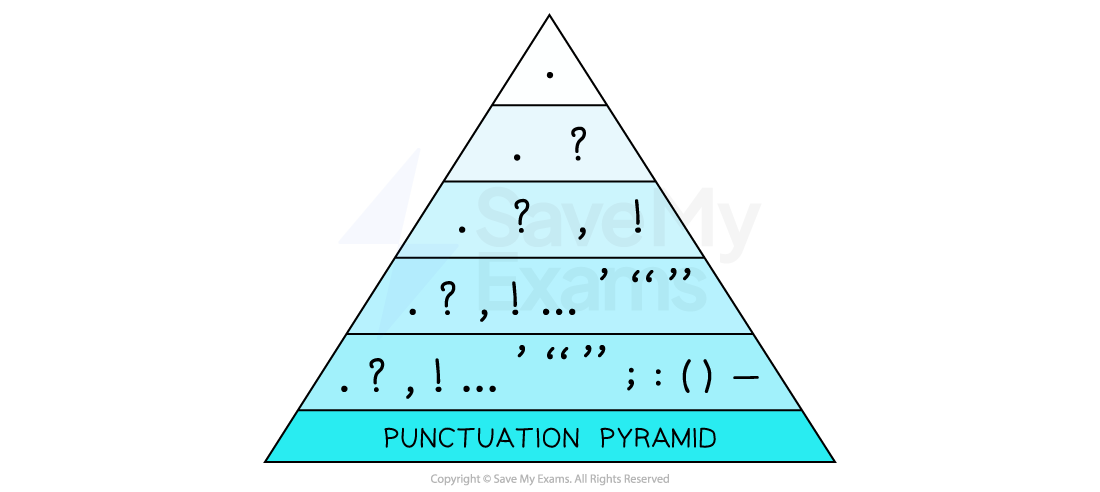Question 1 Directed Writing Skills: SPaG
As you are mainly being assessed on your writing skills, Assessment Objective W5 tests you on your ability to make accurate use of spelling, punctuation and grammar. One of the key things the examiners look for is the use of a range of different sentence forms in your writing, which will naturally lead to a greater range of punctuation which the examiners can then reward. However, getting the basics right and consistency are key. Leaving five minutes to proof-read your work when you have finished writing is therefore really important, as it is easy to make silly mistakes in the pressure of an exam situation.
The following sections will give you an overview of some of the key areas of technical accuracy you should pay attention to:
Exam Tip
Ensure you are careful to use basic end-of-sentence punctuation correctly. A common error is the use of commas instead of full-stops. This is called comma-splicing and should be avoided. A comma represents the separation of two or more parts of a sentence, not a break at the end of a sentence.


